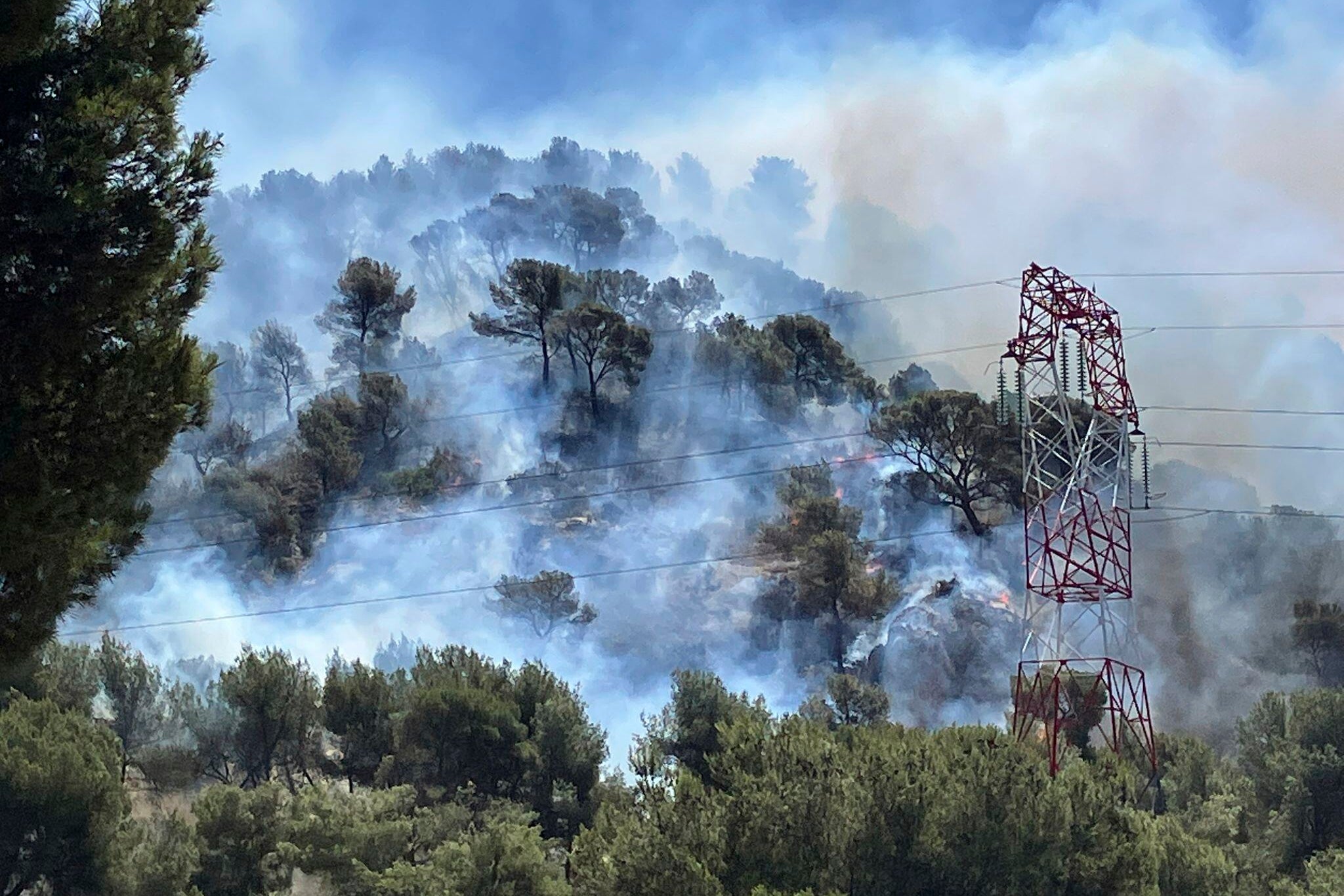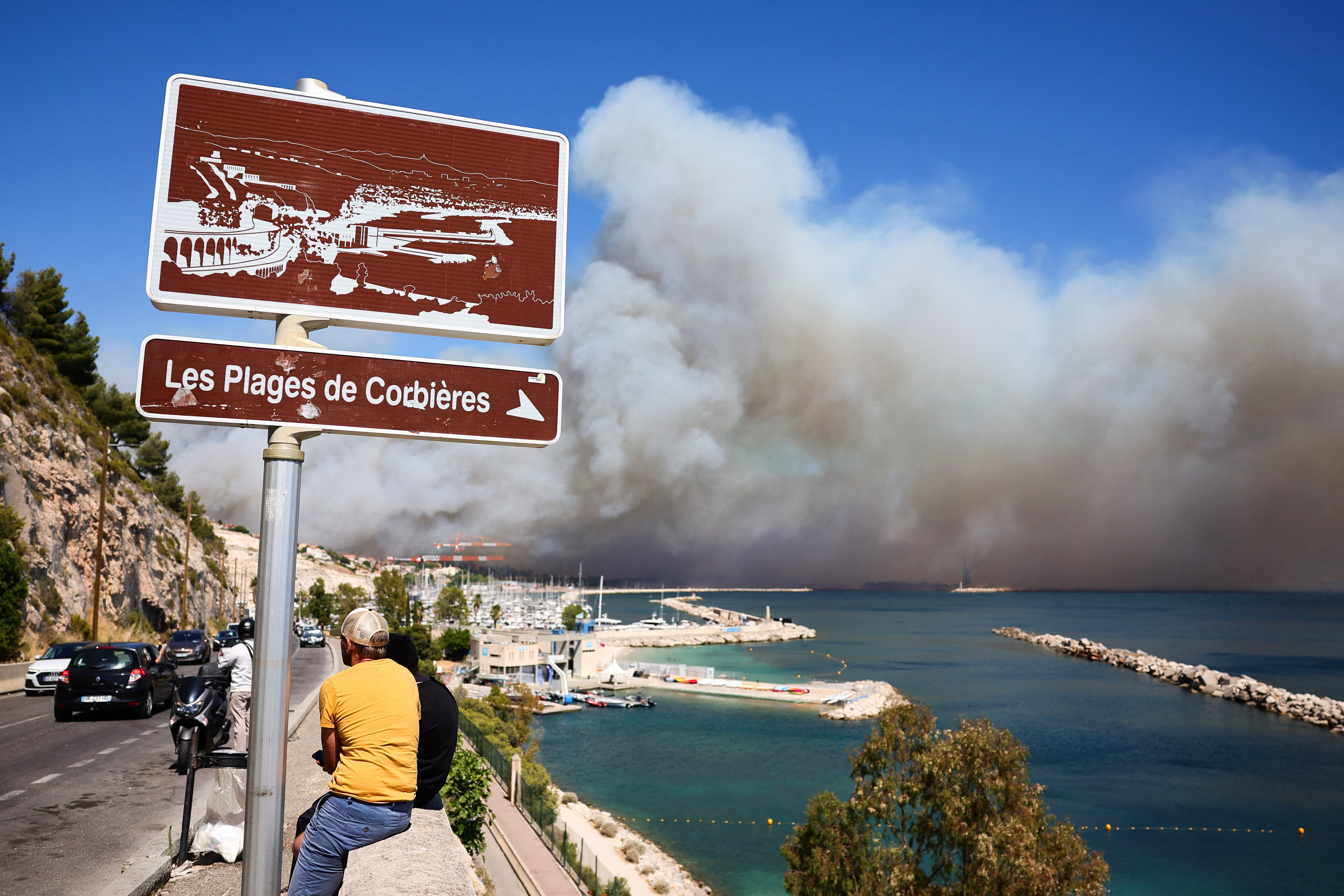A wildfire threatening the outskirts of Marseille was being fanned on Tuesday by a "Mistral" wind with gusts reaching 70 kph (43 mph).
Firefighters said the blaze near the southern French city had, at its most ferocious, advanced by more than 1km per minute.
While the crews had the blaze under control, a weather forecast showing the Mistral set to blow through the evening and part of the night meant it might advance further towards France's second most populous city.
The fire has burned through 700 hectares (1,730 acres) and was considered under control even though it is still burning, regional prefect Georges-Francois Leclerc said.
What is the Mistral wind?
The Mistral is a strong, cold and dry wind that blows from the north or northwest through the Rhone Valley in southern France towards the Mediterranean Sea.

It is a wind, shaped by the geography of the area, particularly the funnel-like Rhone Valley, which accelerates the wind as it moves southward. The name Mistral comes from the word "mistrau" in the local Occitan dialect, meaning "masterly".
The wind is known for blowing clear, dry air in bright blue skies. It has a significant impact on agriculture, architecture and daily life in Provence and surrounding areas.
When does the Mistral wind blow?
The Mistral can occur at any time of year, but it is most frequent in the winter and spring months.
It forms when a high-pressure system over the Atlantic or northern France meets a low-pressure system over the western Mediterranean.
This pressure difference drives air southwards, which intensifies as it passes through the Rhone Valley.
The wind can last from a few hours to several days, and sometimes longer.
How powerful is the Mistral wind?
The Mistral is one of Europe's most powerful regional winds. It often reaches 50 to 90 kph, but gusts can exceed 100 kph, particularly near the coast, and it has been recorded at over 120 kph.
It can damage crops, fell trees and affect roads and air traffic. It can also whip up the seas and be hazardous for sailors.

Despite its challenges, the Mistral also brings benefits: it dries the vineyards and olive groves that are abundant in southern France, reducing fungal diseases.
Artist Vincent van Gogh captured the region's distinctive weather and light in some of his paintings, including Pine Trees against a Red Sky with Setting Sun.
Kate to attend first state banquet in two years
UK will take more measures against Israel if no Gaza ceasefire soon – Lammy
Marseille wildfire latest: Huge blaze rages on edge of French city and shuts airport
Bayeux Tapestry to return to England for first time in more than 900 years
Emmanuel Macron says immigration is a ‘burden’ France and UK ‘must fix’
All the officials and businessmen who have died mysteriously in Putin’s Russia







